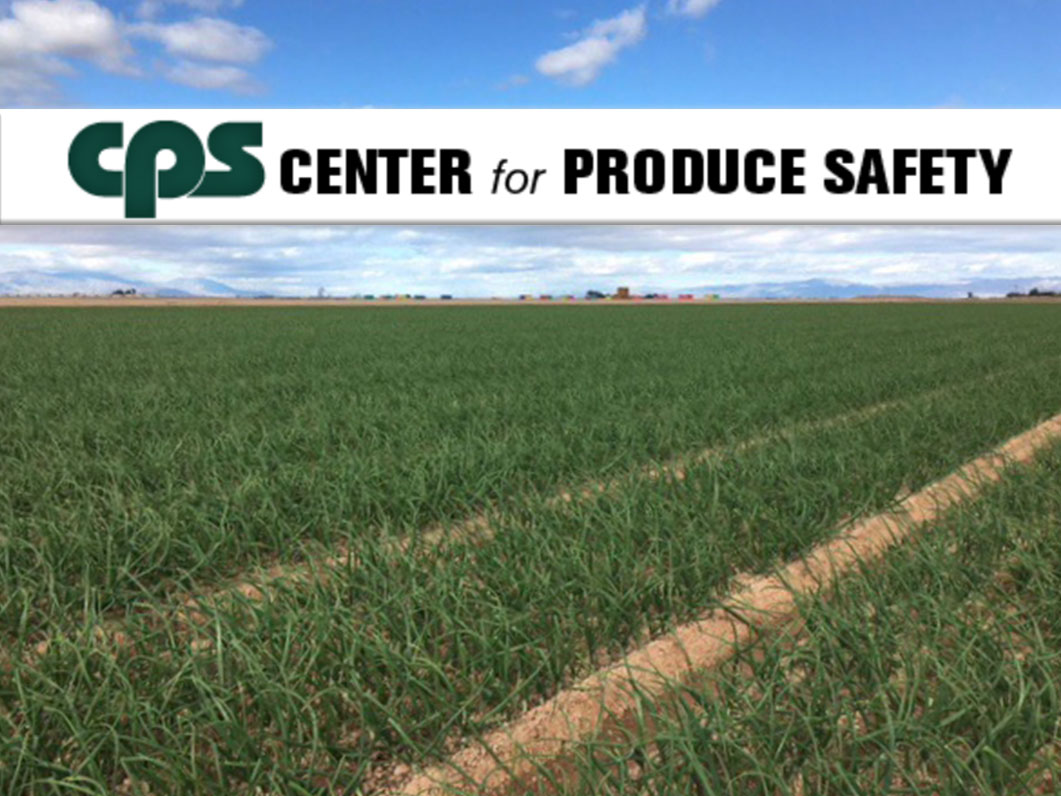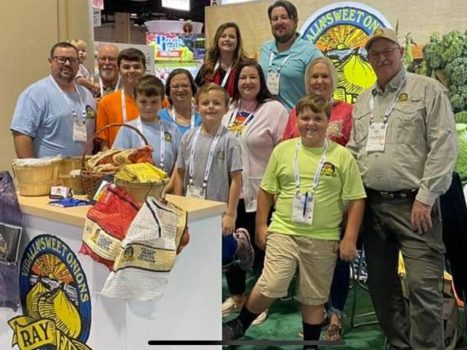Two major university studies in areas with “skin in the game” regarding dry bulb onions were the topic of an Oct. 27 release from the Woodland, CA-based Center for Produce Safety, a 501(c)(3) nonprofit and collaborative partnership “that leverages the combined expertise of industry, government and the scientific and academic communities to focus on providing research needed to continually enhance food safety.”
The collaboration, CPS notes, allows for filling “the knowledge gaps on produce food safety…” and addressing “…both research priorities and immediate industry needs.”
Specifically, researchers in the two projects are hoping to “identify production practices that may contribute to Salmonella contamination of bulb onions and steps growers can take to reduce potential food safety risks.”
| The release listed key takeaways of the studies: • Little information is available about how Salmonella behaves on dry bulb onions. • Field trials in Washington and Oregon found typical field curing of onions killed Salmonella surrogates applied during irrigation or in water used to mix crop protection materials. • Texas researchers plan to conduct field trials to determine how bulb quality traits influence Salmonella internalization. • Goal is to develop recommendations on onion crop management, harvesting, curing, storage and distribution that will help the industry minimize the risk of Salmonella contamination. |
Joy Waite-Cusic, Ph.D., with Oregon State University, is heading the project titled “Assessing the potential for production practices to impact dry bulb onion safety.” Vijay Joshi, Ph.D., with Texas A&M AgriLife Research, is leading the project titled “Strategic approaches to mitigate Salmonella contamination of bulb onions.”
Working with Waite-Cusic as co-principal investigators are Stuart Reitz, Ph.D., Oregon State University; Faith Critzer, Ph.D., University of Georgia; Tim Waters, Ph.D., Washington State University; and Linda Harris, Ph.D., University of California/Davis.
Waite-Cusic was quoted as saying in the release in reference to Salmonella outbreaks in 2020 and 2021 linked to bulb onions, “We’re just trying to figure out what possibly occurred so we’re able to understand the risks,”
In 2022 the researchers conducted onion field trials in Pasco, WA, and Ontario, OR, using a three-strain E. coli cocktail as a Salmonella surrogate.
In the Washington trials involving a yellow onion variety, they made the season’s last overhead irrigation application using E. coli-contaminated water.
In the Oregon trials included red and white onion varieties, and researchers used the E. coli-contaminated water to mix the season’s last pesticide or clay sunscreen application, the release explained. “They focused on the late timing because the closer to harvest a contamination event occurs, the higher the risk. Waite-Cusic said they also chose the two different sites to represent diverse climatic conditions.”
In each of the trials researchers monitored pathogen levels after application “as the onions matured and cured in the field for 30 days.”
And the release added a “Spoiler alert,” saying, that researchers collected the last samples and discovered “everything died.” It said, “Over both field trials, only one onion out of 440 tested at the end of field curing was still positive for E. coli.” Field curing did a great job of mitigating any contamination that happened in any of those water applications.
“This doesn’t tell us the answer to the outbreaks, but it’s great news for the industry and food safety.”
Waite-Cusic said she plans to conduct laboratory dye studies this winter “to see if water applied to leaves of younger plants can move into the tissue and possibly pose a contamination entry route.”
In Texas Joshi’s project “seeks to better understand how Salmonella colonizes and internalizes in onion bulbs,” the release said. “He also plans to identify production practices that may reduce plant susceptibility.”
Joining him as co-PIs are Alejandro Castillo, Ph.D., Texas A&M University; and Daniel Leskovar, Ph.D., and Subas Malla, Ph.D., both with Texas A&M AgriLife.
Joshi cited studies conducted with other produce “that found when plants detect enteric pathogens, such as Salmonella, they trigger immune-like responses,” the release said. “The researchers plan to conduct genetic sequencing to determine whether genes responsible for similar responses occur in onions. If that proves true, the information on synthesis and regulation of antimicrobial compounds from plants could be used to devise strategies to control Salmonella in onions.”
Joshi commented, “Unlocking the genetic potential of plants to combat Salmonella is a novel avenue in improving food safety.”
Also, the release said, “Characterizing the genetic background and chemical and physical factors influencing Salmonella internalization also will help describe the dynamics involved.
“With this information in hand, the researchers plan to conduct field trials to determine how bulb quality traits — including nitrogen content, moisture level, and macro- and micro-elements — influence Salmonella internalization.”
It added, “After harvest, onion growers let the crop cure in the field for several weeks to heal harvest wounds, dry the neck and seal the tops of scales, i.e., the modified layers of leaves within the bulb.
“Drying leaves or damaged bulbs provide entryways for plant pathogenic bacteria that cause sour rot. Because little is known about whether enteric pathogens like Salmonella use the same route, Joshi said they also will look into that.”
And it said that researchers “plan to sample onion production sites, packing sheds and storage facilities to monitor whether the environments are conducive for Salmonella establishment.”



